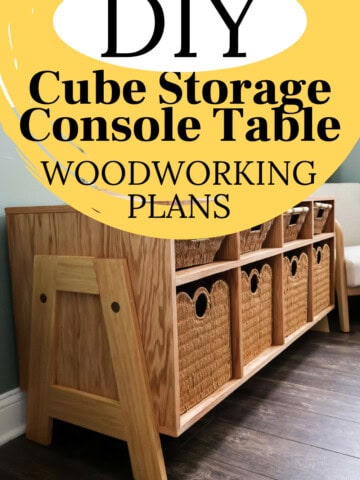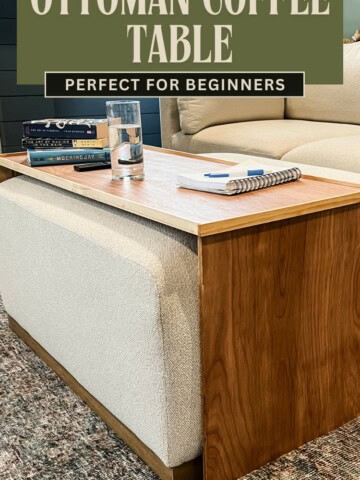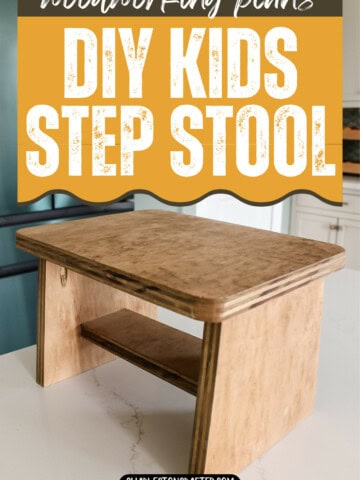Stressed shopping for plywood for your woodworking projects? Here's how to get the best plywood for your money and our guide on how to shop for plywood!
We love working with plywood because you can cut it down to the exact size you need - no piecing together of boards necessary. You also get a lot more wood for a lot cheaper than boards.
But have you ever been shopping for plywood and felt... overwhelmed?
There are a lot of choices and a lot of big and small differences between boards.
This article is written from the perspective of an at-home furniture woodworker. So, this is less about home construction but using plywood for DIY and woodworking projects in your home.
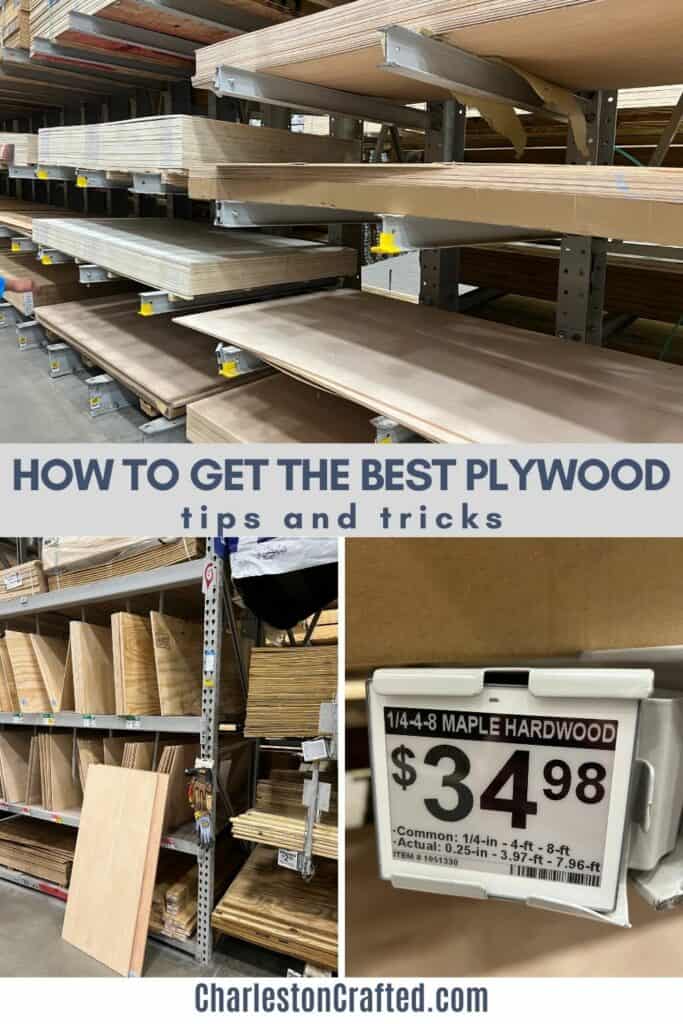
What is plywood
Plywood is manufactured sheets of wood that are a composite of wood shavings and glue pressed together with a thin wood veneer on the outside layer.
Plywood is a great choice for a lot of DIY projects because you get a lot more wood for much cheaper than if you buy boards. However, you'll have to cut it down.
Cutting your own plywood can be more difficult because you need more space and tools and it is very heavy and cumbersome, but it is a great option to customize the sizes of boards you need for your project.
If you have trouble carrying plywood, check out our review on the Kreg Panel Carrier!
Plywood is a great option especially for large projects because you can build frames much easier.
Click here to see how to drill pocket holes in plywood for furniture projects!
The important thing to remember is that there is no universal "best plywood." Different plywood types are better for different uses.
Sometimes, you want beauty. Sometimes, strength. Other times, it's just utility. There is no one-size-fits-all solution. Keep that in mind when shopping and planning!
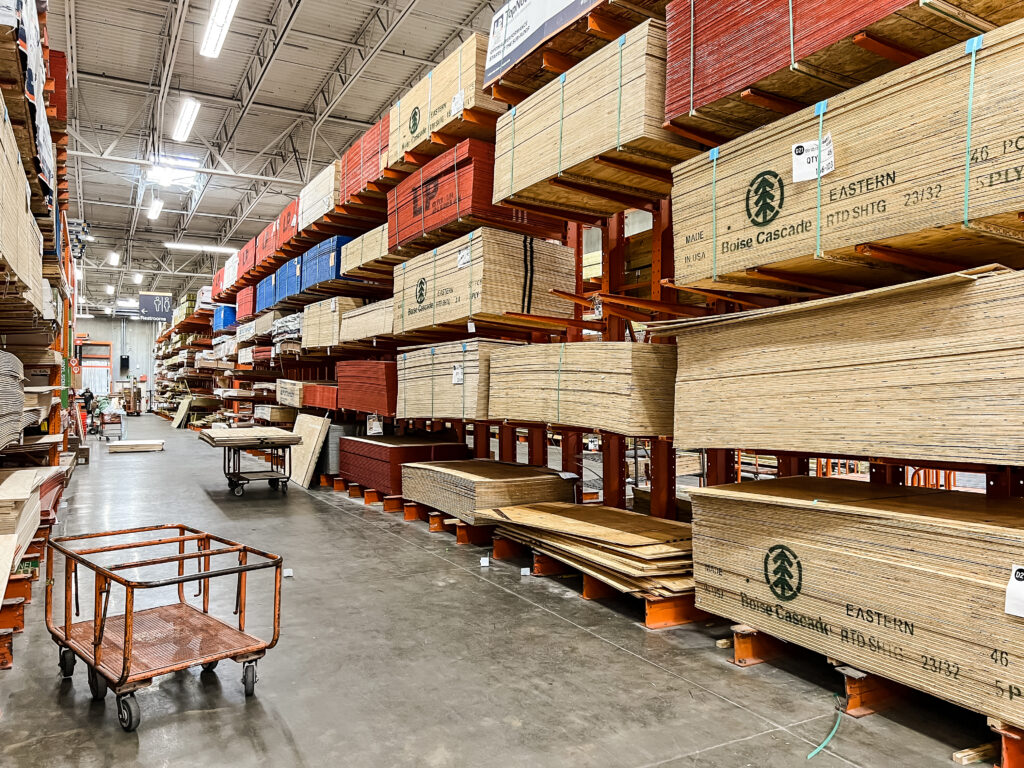
Plywood vs hardwood
When you are deciding to take on a DIY project, you have to decide pretty quickly if you want to work with boards or a sheet of plywood.
What is the difference between hardwood and plywood?
Hardwood is made from one solid piece of wood, while plywood is layers of wood materials glued together to form a sheet.
Hardwood comes in boards such as 1x4, 1x6, etc. Plywood comes in big sheets - either 4'x8' or 2'x4'.
Is plywood more expensive than hardwood?
A sheet of plywood costs more than one standard board of lumber. But, if you need a large quantity of boards for a build, one sheet of plywood is usually much cheaper than buying a dozen 1x4s.
Here are our tips for shopping for lumber and here's our guide to getting cheap and free lumber.
What is the main advantage of using plywood compared to solid wood?
Plywood is great if you need to cut a custom size and want one piece of wood. For example, our plywood countertop is one piece of plywood cut to size with no seams.
To use hardwood, we would have had to screw together pieces of wood. We've done that before, but it's a different look.
You can cut any size or shape you want out of a piece of plywood and keep it as one piece, so if that's important to you, thats the advantage of plywood.
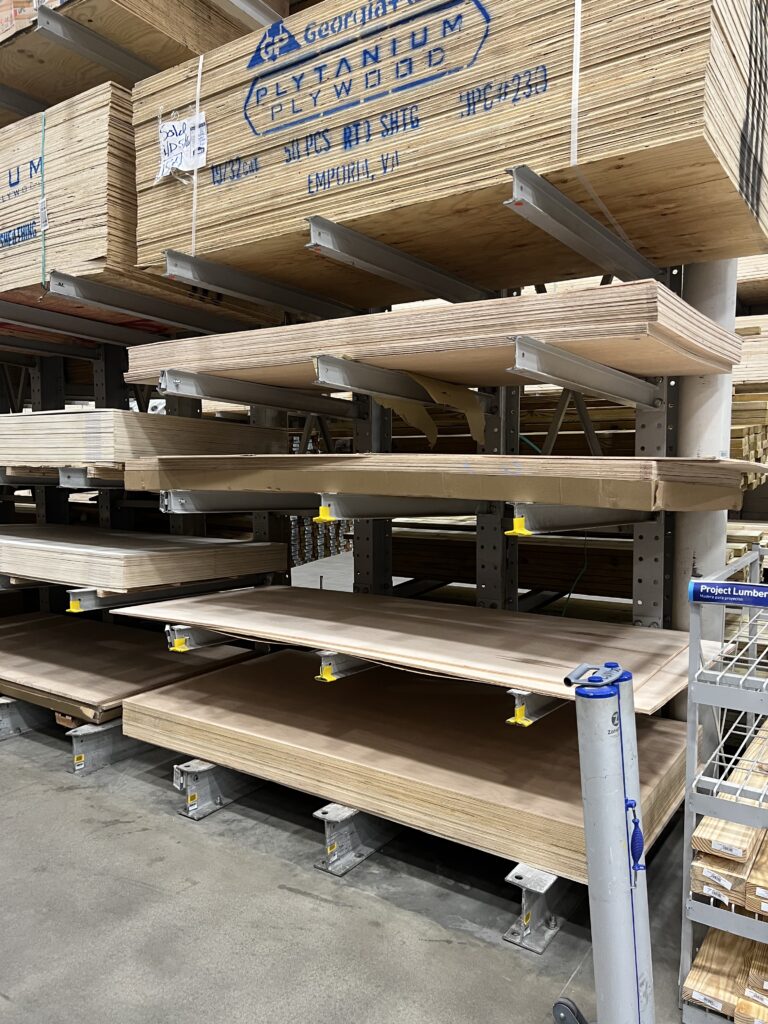
How to shop for plywood
Here are the things to look at when selecting plywood for your project.
Inspect face veneers
Look at the veneer on the face of the plywood sheet. Look for damage or spots that have been repaired with wood filler - they never take stain well.
Think about your project - how visible with the faces be, will you be staining or painting. Select accordingly.
There's also a big difference in the look and color of different veneers. Oak plywood, birch plywood and pine plywood all look very different.
Look for flatness
Hold up your plywood and look down the face to check for any bowing. Bowed plywood is hard to fix, so swap it for a flatter type.
Core types
Plywood is made up of veneer on the outside with a core on the inside.
Here are some of the core types that you usually see for sheets of plywood:
- Lumber core (usually basswood)
- Veneer core
- Combination core
- MDF core
- Particleboard core
Also look for any major voids (holes showing on the edge of the board in the core) and pick a different piece if that will be a problem.
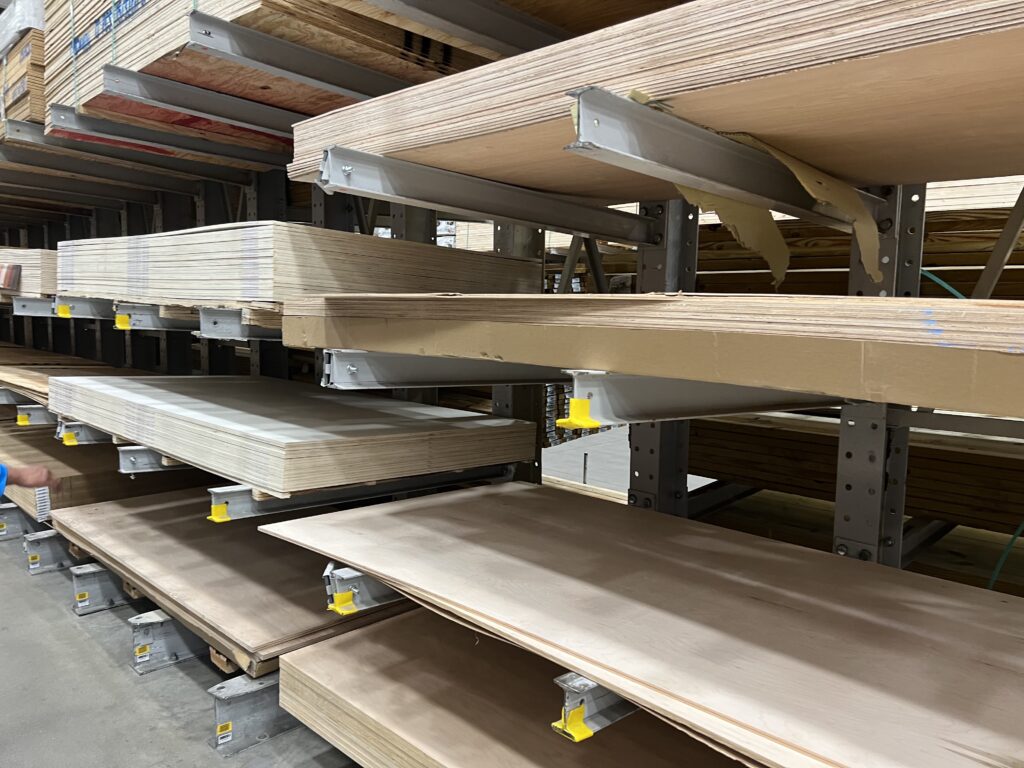
Which plywood is strongest?
Marine plywood is extremely strong and designed to handle the elements. But, here are some things to keep in mind when shopping for strong plywood:
- Hardwood plywood is, in general, stronger than soft wood plywood.
- Thicker plywood is always going to be stronger than its thinner counterpart.
- The number of layers in plywood correlates to its strength. Less than four is weak, 4-7 is moderate, and more than 7 layers is very strong.
- Veneer core plywood alternates by 90 degrees the angle of the wood grain in each layer, making the plywood very strong and less likely to break along a grain line.
Avoid low quality core materials for furniture building
Plywood with MDF or particle board cores are not great at holding screws and can be frustrating to use for building furniture.
Have you ever gotten cheap furniture from a big box store and when you screw the pieces together it cracks and crumbles? That's what you want to avoid with plywood for furniture.
The best plywood for furniture is usually a veneer core. It's easy to come by, has a large weight-bearing strength, and is strong enough to hold screws really well.
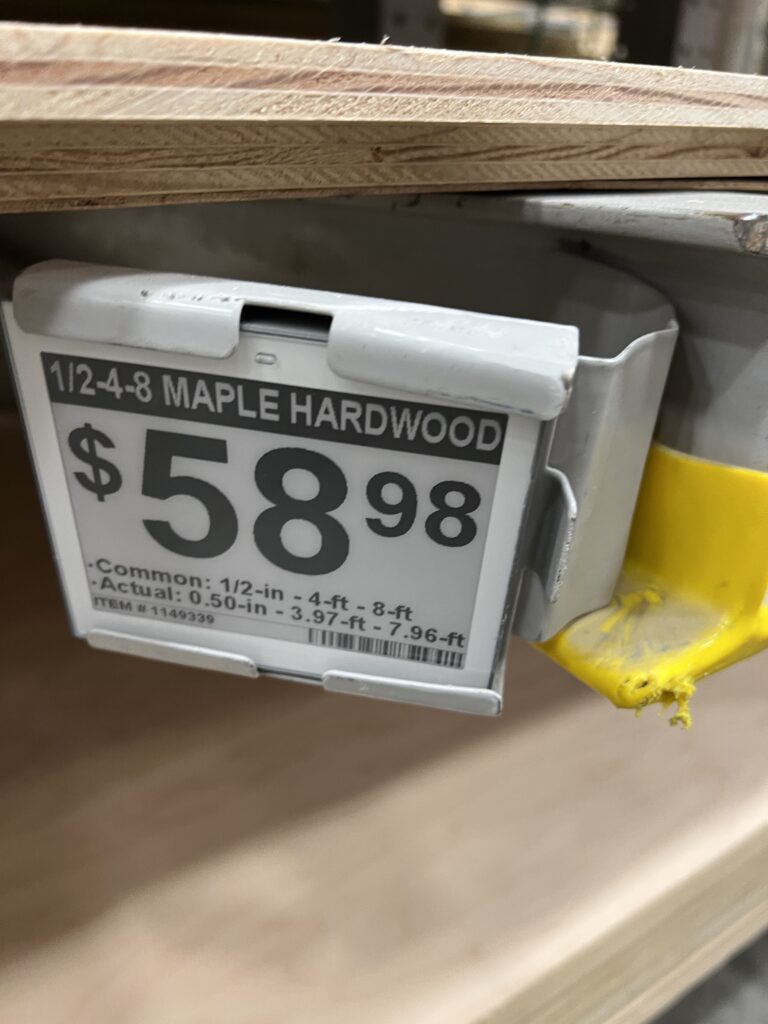
Wood types
There are many different types of plywood made from different species of wood. Common species include:
- Oak
- Maple
- Birch
- Mahogany
- Cherry
- Pine
Usually, more expensive types of hardwood plywood are labeled with their species.
Occasionally, plywood will be labeled just as a generic "cabinet grade plywood." This is almost always birch, the cheapest of the hardwood plywoods. Just because birch is cheaper than oak or maple doesn't make it bad. I think the birch veneer is the prettiest option.
Remember that any plywood veneer type can be placed on any plywood core type. So, you need to pay attention to both the veneer species and the core type when shopping.
Oak vs maple vs birch plywood
Oak, maple, and birch are the species of plywood that you are most likely to see for sale at larger box type lumber stores.
Oak plywood is going to be the most expensive, heaviest and strongest. Birch is the most common hardwood plywood.
Check out this buffet table with made with oak plywood!
Is maple or birch plywood better?
Maple plywood is much stronger than birch plywood. However, it is also more expensive. You will have to decide if the added strength is needed for your project and worth the upcharge.
As mentioned, birch plywood is beautiful, so don't look down on it.
Check out these bedside tables we made with birch plywood!
How can you tell the difference between birch and maple plywood?
Raw birch and maple are different colors. Birch has a honey/golden color while maple is much lighter and not so yellow.
What stains better maple or birch?
Birch is a softer wood with a more open grain so it absorbs a lot of stain. Be sure to use a pre-stain wood conditioner to avoid blotchiness.
Maple is a harder wood and absorbs much less stain.
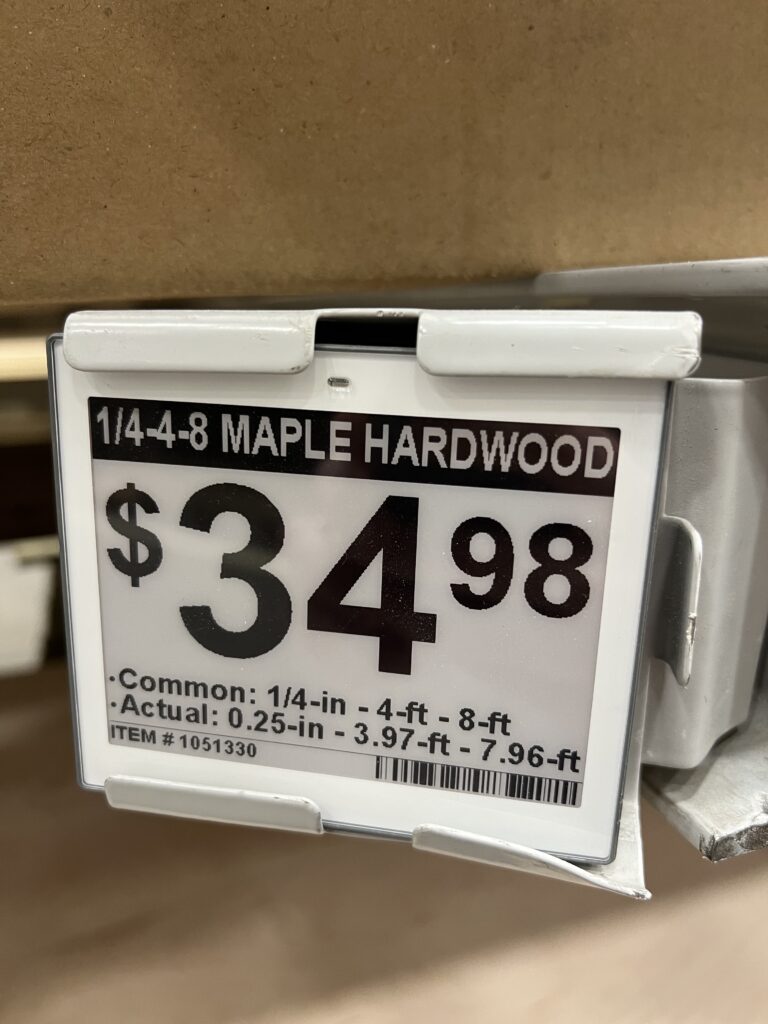
Thickness of plywood
Plywood comes in different thicknesses. The thickness that you need will depend on the project that you are doing and how strong you need the plywood to be.
What are common thicknesses of plywood material?
- ¾ inch
- ½ inch
- ¼ inch
Other thicknesses of plywood can include:
- 1 ¼ inch
- 1 ⅛ inch
- ⅝ inch
- ⅜ inch
- ⅛ inch
What is the actual thickness of ½ inch plywood?
The actual thickness of a piece of plywood is usually 1/32” thinner than what it is labelled as. So, a ½ inch piece of plywood would really be 15/32”.
Different types of ¾" thick plywood however are often labeled as slightly thicker, so be sure to pay attention.
What thickness of plywood is best for cabinets?
It is typical to use ½" thick plywood for cabinet boxes and drawers, though you can use ¼" thick plywood for drawer bottoms.
We made a lot of drawers for our DIY walk-in closet built in!
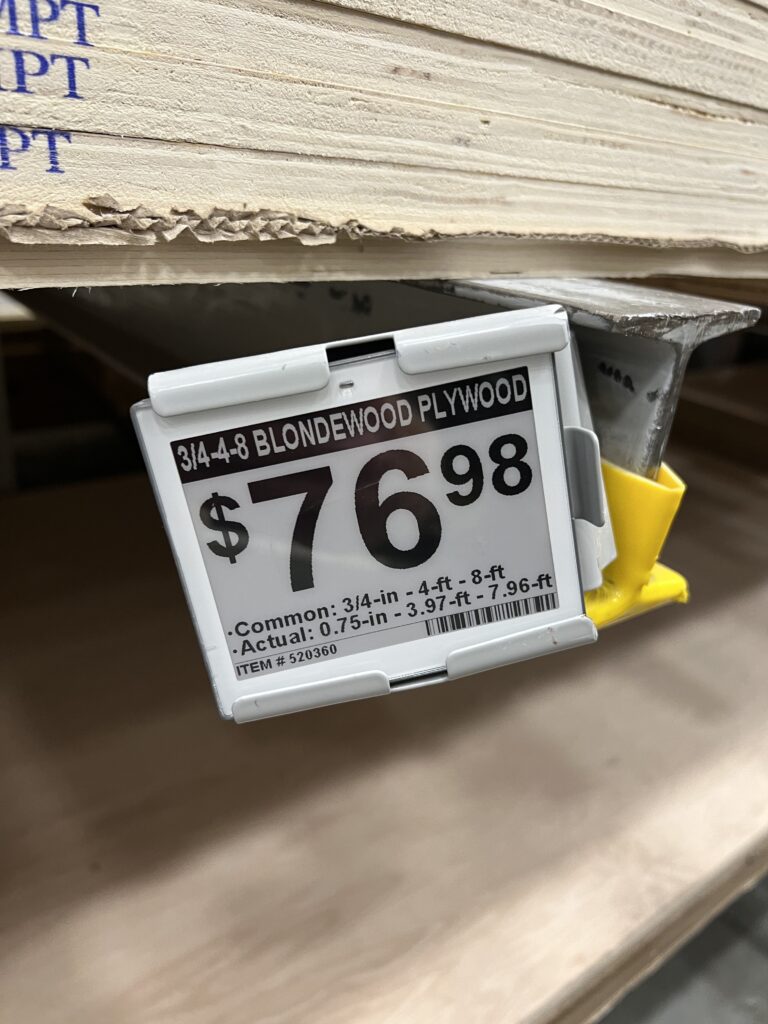
Understanding the grading system
Plywood will get two grades: one for the visible face and one for the back face. The visible face gets a letter grade and the back face gets a number grade, to create a combined grade like A2 or B3.
If you need to see both sides of the plywood, you are going to want something with a higher grade back face, but be prepared to pay for it.
What are the grades of plywood?
Visible Face Grades:
- A – sanded, smooth, mostly free of knots and repairs.
- B – minor splits, repairs, or knots under 1 inch. No holes.
- C – knots up to 1.5" and knot holes up to 1". Some splits or discoloration.
- D – knots and knotholes up to 2.5". No repairs.
Back Face Grades:
- Sound, same species, specifically cut
- Solid, same species, specifically cut
- Rotary Grain (looks like plywood, not solid wood)
- Reject Back
If a plywood has an X at the end of the grade (such as B2X) that indicates that it is intended for exterior use.
The grade should be stamped on the side of each sheet of plywood.
What grade of plywood is used for furniture?
The grade of plywood that you choose for your furniture project will depend on how you want the wood to look, if you plan to stain or paint it, and your budget.
Grades B3 and below are typically considered "paint grade plywood" and not of high enough quality to stain.
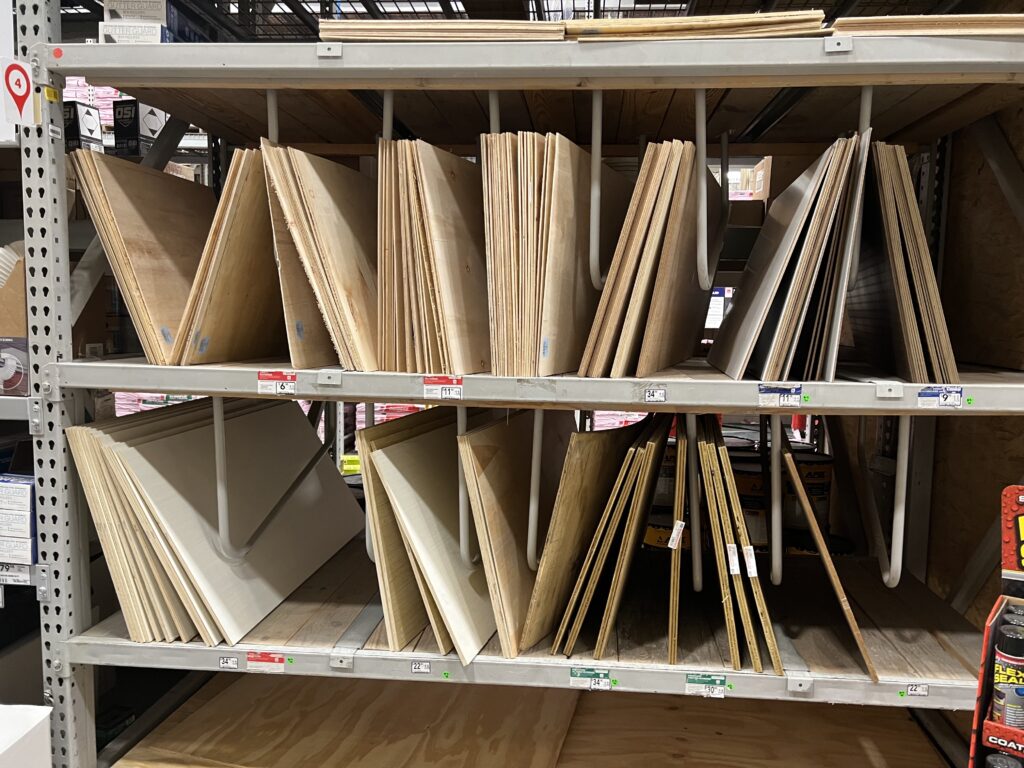
Why quality of plywood matters
High grade plywood will have a face veneer about 1/40” thick. Low grade plywood can have a face veneer as little as 1/100” thick.
This can make a big difference if you are sanding. I know that I have sanded thrifted furniture with a cheap plywood veneer and you can sand through the veneer very easily and are left with really ugly wood that can only be painted.
Projects made with plywood
Here are some of our favorite woodworking projects that we have made with plywood:
Any more questions about shopping for or building with plywood sheets?
Looking for something?
We've been doing this since 2012 so we have a LOT of blog posts!
Search stuff like: Ceiling Projects | DIY Plant Stands | Thrift Flips


Hello, I'm Morgan, half of the creative force behind CharlestonCrafted.com! With a passion for DIY that dates back to 2012, I've transformed three homes and now I'm dedicated to helping others craft their dream spaces. Let's turn your house into a home together!


